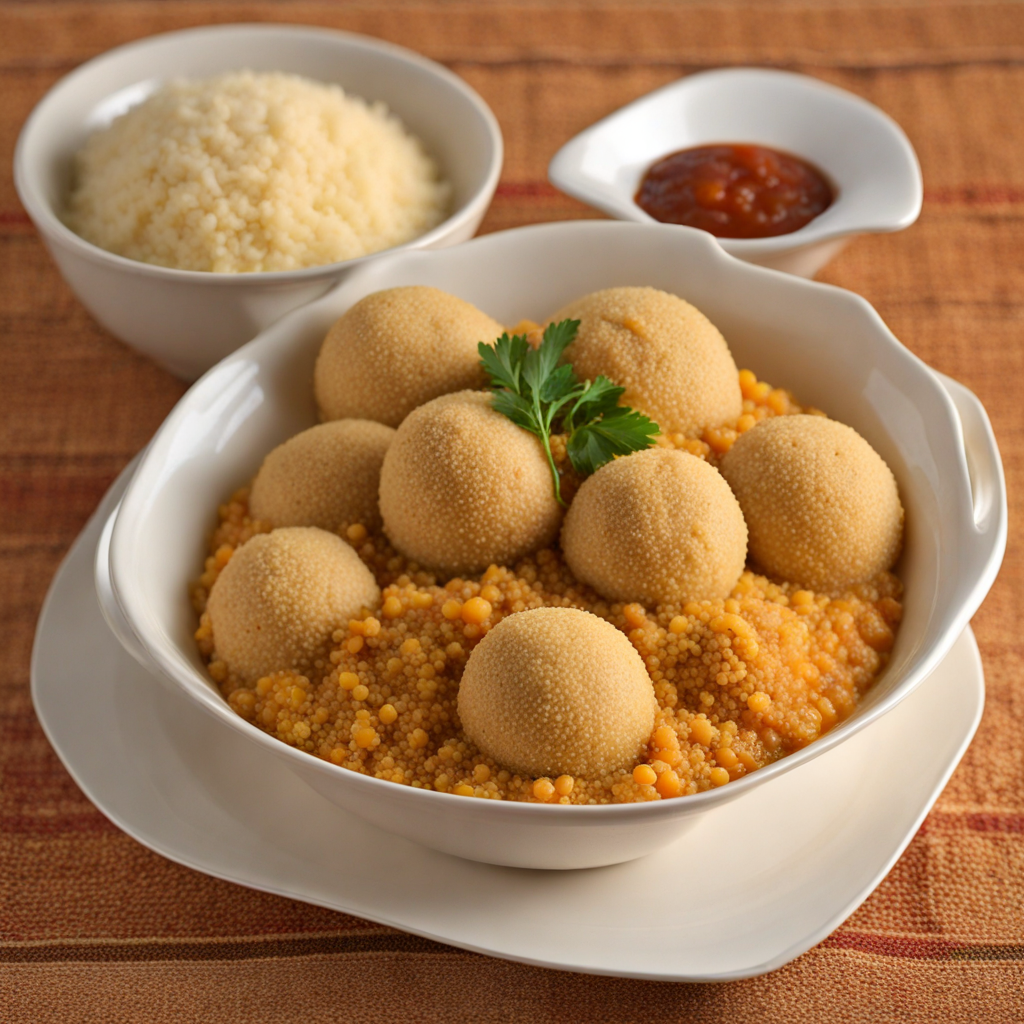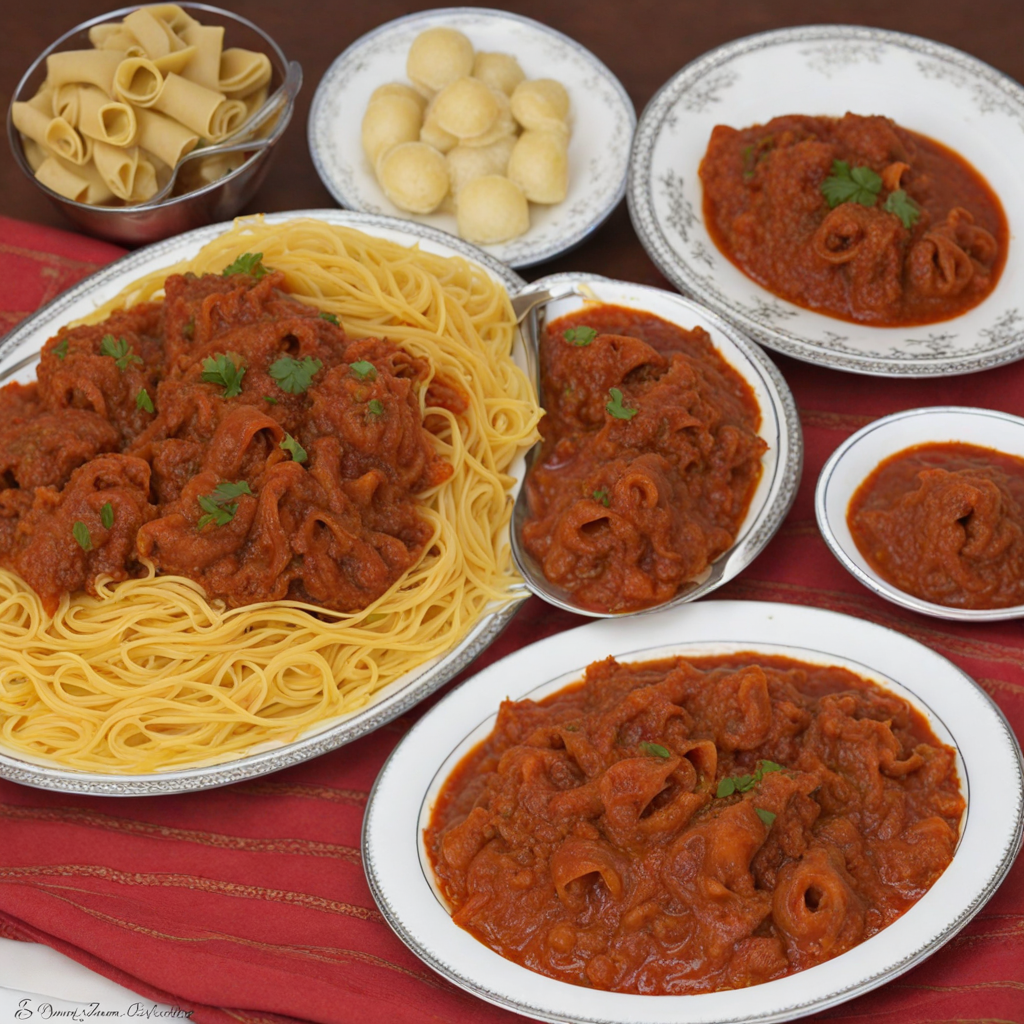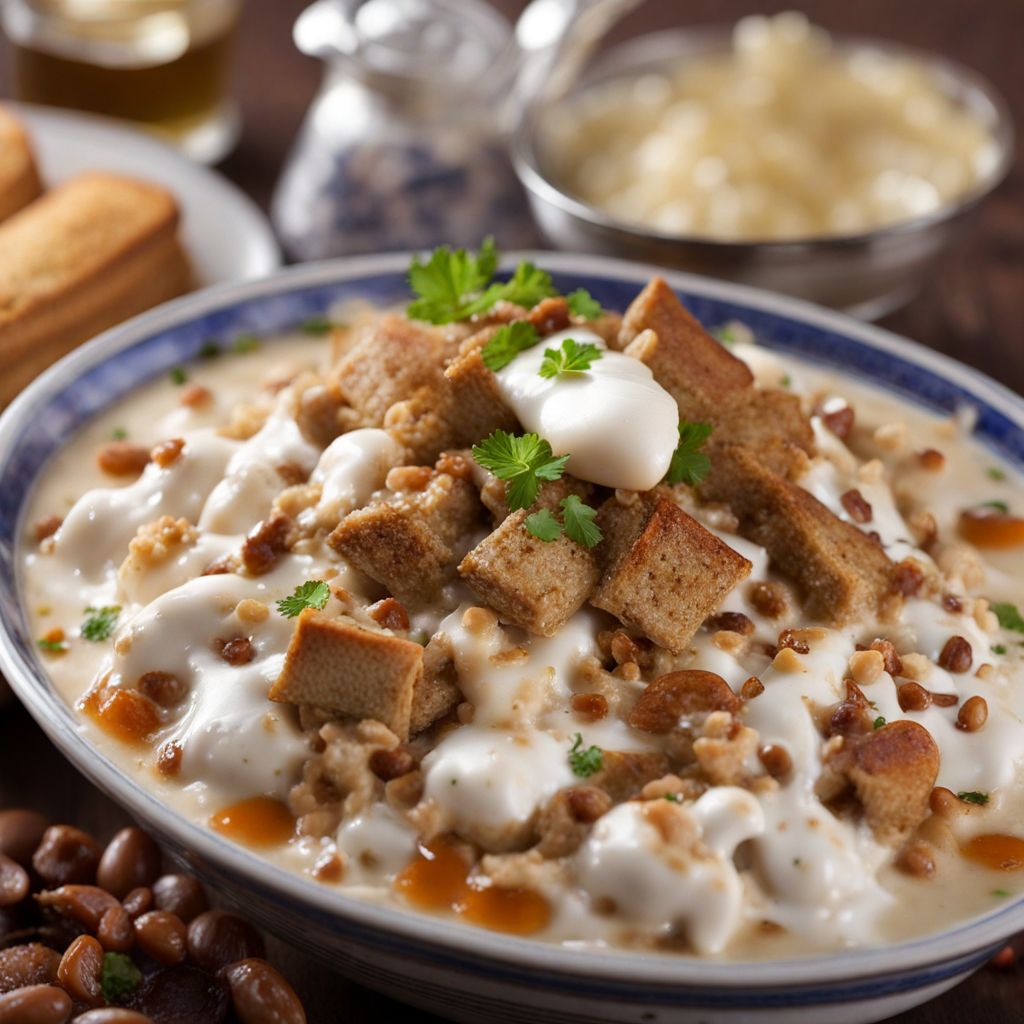Couscous
Couscous is a traditional dish that holds a special place in Libyan cuisine, characterized by its fluffy, granular texture made from semolina wheat. The preparation involves steaming the granules over a simmering broth, often infused with spices and herbs, which adds depth and flavor to the couscous. This process results in a light, airy texture that serves as the perfect base for a variety of toppings, from vegetables to meats, making it a versatile dish that can be enjoyed in many ways. In Libya, couscous is typically served with a rich, aromatic stew known as "margoog," which consists of tender meat, such as lamb or chicken, and a medley of vegetables like carrots, zucchini, and chickpeas. The stew is seasoned with a blend of spices, including cumin, coriander, and cinnamon, giving it a distinctive warmth and complexity. The combination of the savory stew and the neutral couscous creates a delightful balance, allowing the flavors to meld beautifully on your palate. Couscous is often a communal dish, shared among family and friends, fostering a sense of togetherness and celebration. It is common to find it served during special occasions and gatherings, where it is heaped onto a large platter and enjoyed straight from the center. With its inviting aroma, satisfying texture, and a myriad of flavor profiles, Libyan couscous is an extraordinary culinary experience that invites you to explore and indulge in the rich heritage of North African cuisine.
How It Became This Dish
Origin of Couscous Couscous, known as "كسكس" in Arabic, is a traditional dish that has been a staple in North African cuisine for centuries, with its roots deeply embedded in the Maghreb region, particularly in countries like Libya, Algeria, and Morocco. The earliest records of couscous date back to the 9th century, but it is believed that the dish may have originated even earlier, potentially during the time of the Berber tribes who inhabited North Africa. The Berbers, known for their agrarian society, cultivated grains such as barley and wheat, which were foundational to their diet. The name "couscous" is derived from the Berber word "seksu," which means "well rolled" or "well formed," aptly describing the fine granules of semolina that are steamed and fluffed into the dish. Traditionally, couscous was made by hand, with women rolling the semolina wheat with water to create the small, round granules before steaming them in a special pot called a "couscoussier." This cooking method not only preserves the nutritional value of the grain but also imparts a unique texture and flavor. \n\n Cultural Significance in Libya In Libya, couscous is more than just a meal; it is a symbol of hospitality and communal life. It is often served during family gatherings, celebrations, and religious festivities. The dish is typically accompanied by a rich stew, often made with lamb, chicken, or vegetables, flavored with a variety of spices like cumin, coriander, and saffron. The preparation and sharing of couscous is a communal activity, with families gathering to enjoy the dish together, reinforcing social bonds and cultural identity. Libyan couscous is traditionally served on a large communal platter, and it is customary for diners to eat from the same dish, using their hands. This practice not only fosters a sense of unity but also reflects the cultural values of sharing and generosity. In many Libyan households, the preparation of couscous is a ritual, often passed down through generations, with each family adding their own twist to the recipe, thus contributing to the dish’s regional variations. \n\n Regional Variations and Influences While couscous is a staple across North Africa, each country and region has its own unique take on the dish. In Libya, couscous is often prepared with a slightly coarser texture compared to its Moroccan counterpart, which is typically finer. The Libyan version may also incorporate local ingredients such as chickpeas, raisins, and spices indigenous to the area. The use of tomato-based sauces is common in Libyan couscous, setting it apart from other variations that may use broth or a more subtle seasoning profile. Over the centuries, couscous has absorbed various cultural influences, particularly due to Libya's historical position as a crossroads for trade and migration. The Phoenicians, Romans, and Ottomans all contributed to the culinary landscape of Libya, infusing their flavors and cooking techniques into the local cuisine. As a result, couscous has evolved, adapting to the tastes and preferences of different communities while maintaining its essential character. \n\n Modern Developments Today, couscous remains a vital part of Libyan cuisine and is enjoying a resurgence in popularity both locally and internationally. With the modern culinary landscape increasingly embracing traditional foods, couscous has been recognized for its versatility and health benefits. Whole grain couscous, made from durum wheat, is often hailed for its high fiber content and is seen as a nutritious alternative to more processed grains. In contemporary Libyan cooking, couscous dishes have diversified further, with chefs experimenting with various ingredients and cooking methods. Fusion cuisine, which blends traditional Libyan flavors with global culinary trends, has emerged, leading to innovative dishes that still pay homage to the original recipes. Couscous can now be found in high-end restaurants, food festivals, and even international markets, showcasing its adaptability and broad appeal. \n\n Couscous in Global Cuisine The global rise of Mediterranean diets has also contributed to the popularity of couscous outside of North Africa. In Europe and North America, couscous is often featured in health-conscious meals, salad bowls, and vegetarian dishes, celebrated for its lightness and ability to absorb flavors. This international recognition has allowed for the appreciation of couscous not just as a traditional dish but as a versatile ingredient that can be incorporated into a variety of culinary styles. Couscous festivals, held in various parts of the world, celebrate this beloved grain, with competitions, cooking demonstrations, and cultural showcases. These events highlight the rich history and significance of couscous, fostering a sense of community among food enthusiasts and celebrating the diverse ways in which this dish can be enjoyed. \n\n Conclusion: The Legacy of Couscous Couscous is much more than just a food item; it is a rich tapestry of history, culture, and community that reflects the essence of Libyan identity. As it continues to evolve and adapt to contemporary tastes, couscous remains a powerful symbol of cultural heritage and resilience. Its journey from a traditional staple in North Africa to a global culinary icon illustrates the enduring appeal of this ancient dish, reminding us of the connections that food can forge across cultures and generations. The legacy of couscous is a celebration of shared traditions, innovative adaptations, and the universal love for a hearty meal that brings people together.
You may like
Discover local flavors from Libya







